What are Water Spirits ?
 aquatic life
aquatic lifeWhat are Water Spirits ?
What are Water Spirits ?
Water spirits, also known by other names such as water nymphs, water sprites, or undines, are mystical beings associated with water, appear in the folklore of diverse cultures worldwide. They represent the beauty, power, and mystery of water, influencing everything from myths and rituals to modern storytelling.
While some believe that water spirits are demonic forces, the Bible, particularly the Gospel of John, states that the Holy Ghost is often symbolized by water, representing cleansing, renewal, and spiritual life.
This article will delve into how different culture's view water spirits and their roles in mythology, rituals, and environmental conservation.
Water Spirits and the Dead
In some cultures, it is believed that individuals who have committed suicide by the act of drowning their spirits are condemned to inhabit bodies of water for eternity.
Water and Marine Spirits
Although water spirits and marine spirits are connected to bodies of water, they are distinct. Marine spirits are specifically associated with the sea or ocean, while water spirits are linked to all types of water, including sea, ocean, rivers, springs, etc.
Water Spirits Across Cultures
Water spirits, or mystical beings linked with water, are prominent in the folklore of many cultures, symbolizing both the nurturing and destructive aspects of water. They often emerge as symbols of beauty and danger, shaping our understanding of the sea and its mysteries.
These spirits often inspire respect and protection for vital ecosystems, showcasing humanity’s reverence for water’s power and its intrinsic connection to the health of the earth.
Africa
In Yoruba, an African traditional religion, Yemaya and Oshun have been revered since the earliest times as water spirit goddesses, reflecting the deep historical significance of water spirits in African traditions. They are known for their motherly healing energies. Yemaya is often depicted as a mermaid.
Even in modern times, a spiritual tradition is observed in Brazil on New Year's Eve at Copacabana Beach. Worshippers gather to honor Yemayá, the Goddess of the Ocean, by throwing white roses and small boats filled with flowers and gifts into the Ocean. This ritual takes place each year in the hope of ensuring a prosperous year ahead. The event attracts hundreds of thousands of participants.
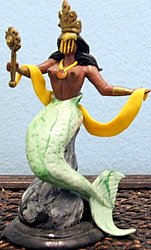 Yemaya -the mermaid
Yemaya -the mermaidMami Wata is also a significant water spirit goddess in various African cultures and parts of South America and the Caribbean. She is known to be a spiritual spouse who guides and protects. She is associated with fertility, healing, love, wealth, and the protection of aquatic environments.
She embodies male and female traits, though she is typically depicted as female, often as a mermaid or, at times, as a snake charmer. Her allure and power make her a central figure in African spiritual traditions, where she is intertwined with the mysteries of water.
While Yemaya and Mami Wata are both associated with African and Afro-Caribbean religions and represented as mermaids, they are completely distinct entities.
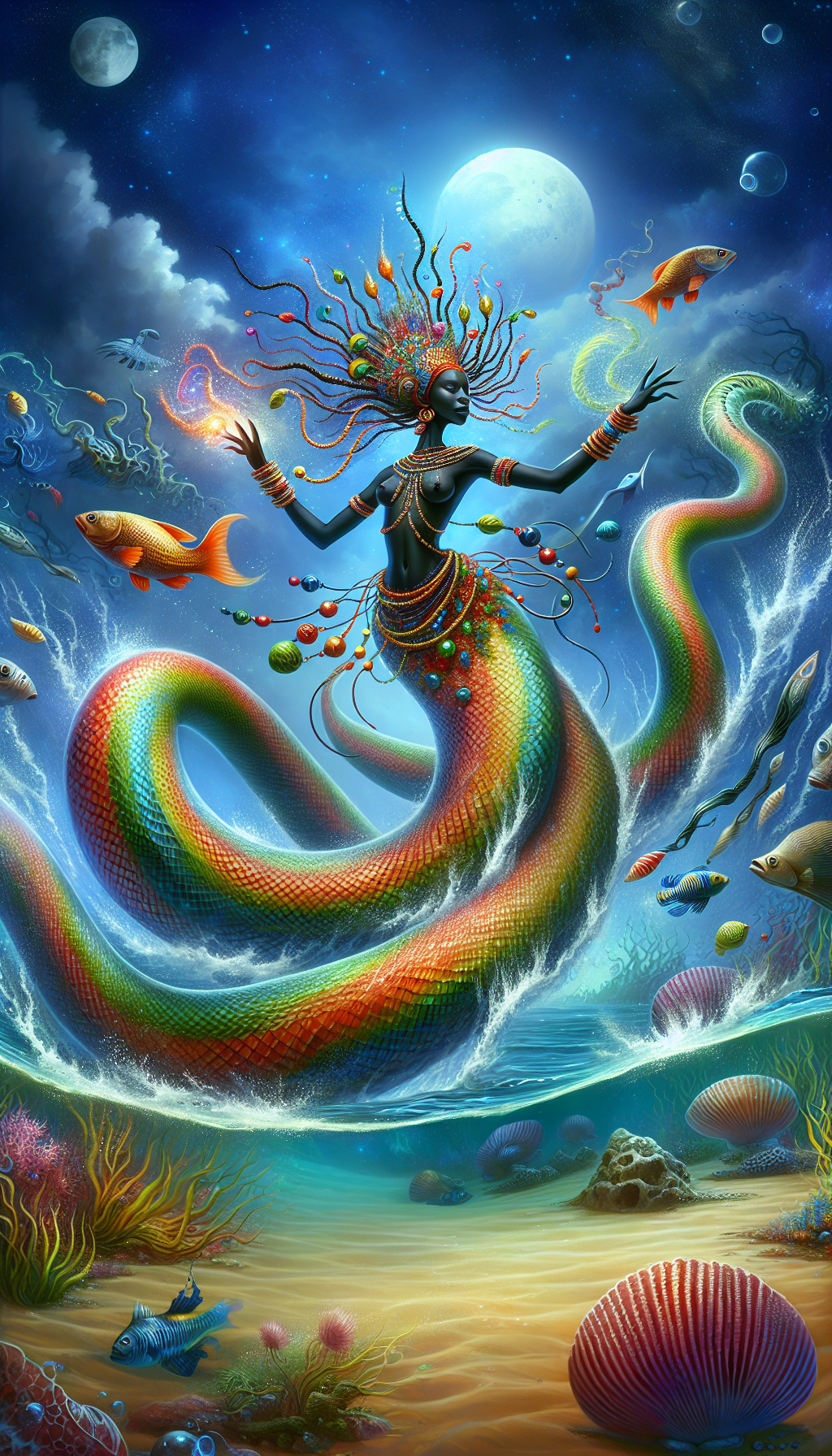 Ma Wata pic by Tai
Ma Wata pic by TaiCeltic
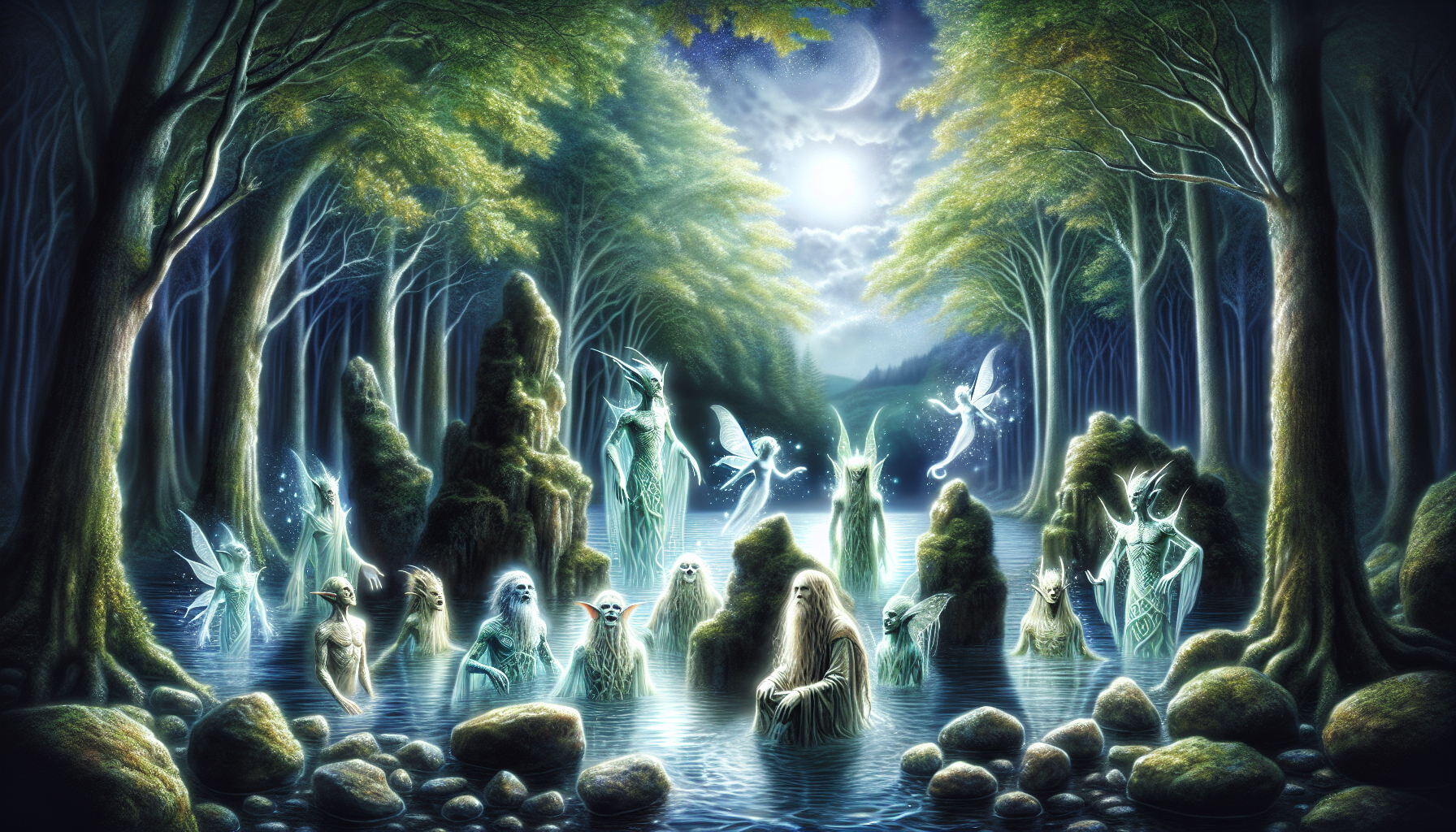 What are water spirits ? -pic by Tai
What are water spirits ? -pic by TaiCeltic water spirits, often shown with magical abilities, deeply connect to natural elements and the changing seasons. These spirits are integral to Celtic mythology, embodying the duality of nature’s purity and power.
Their presence in folklore underscores the Celts’ deep respect for water and its life-giving properties.
Japanese
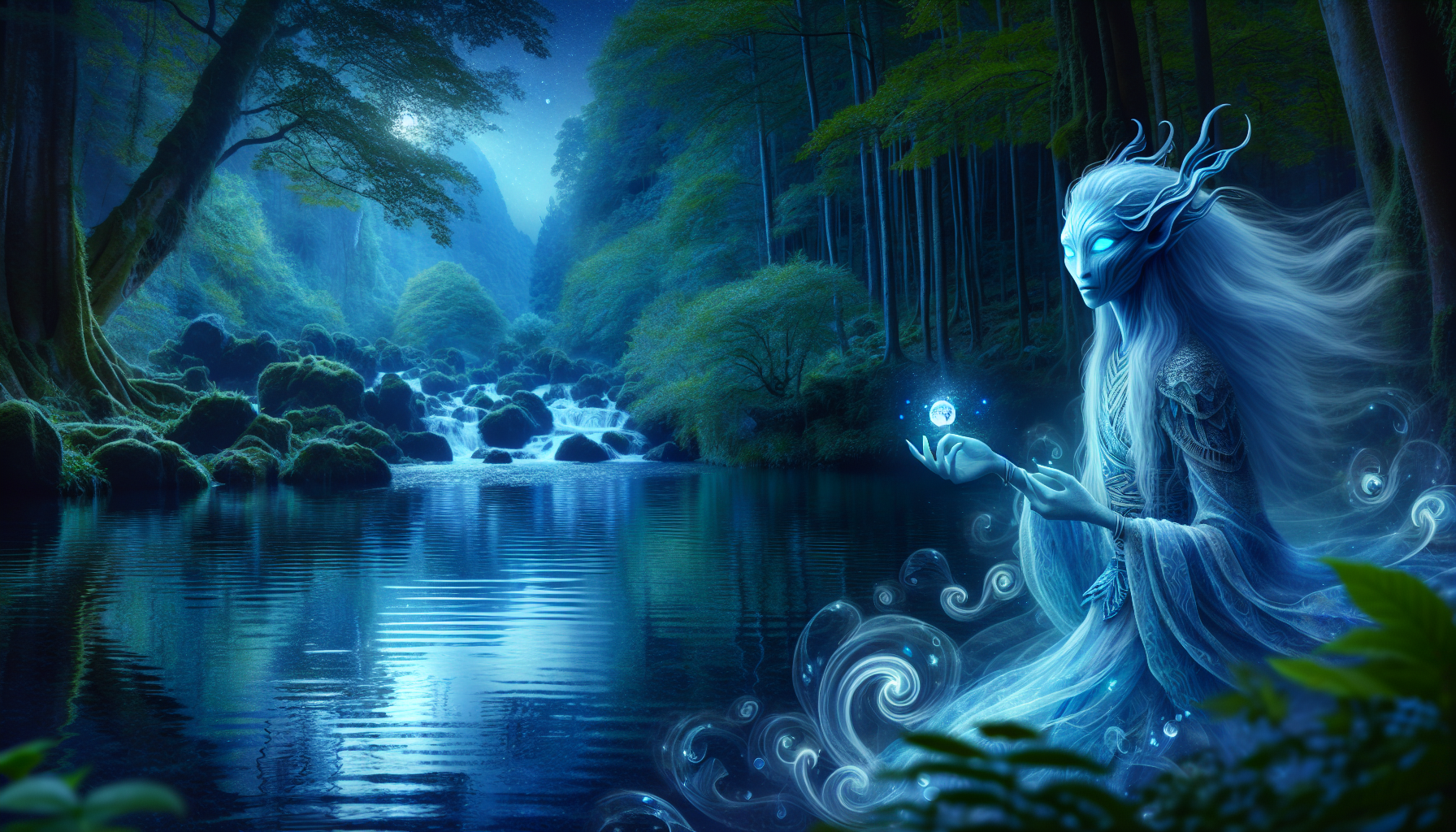 pic by Tai
pic by TaiJapanese folklore includes water spirits such as the mischievous Kappa and the tempestuous Umibōzu. The Kappa, known for its dual nature, can protect waterways yet also pose harm to humans, often being perceived as evil spirits in certain tales. Meanwhile, the Umibōzu, characterized by its giant size and unpredictable temperament, often appears during storms at sea, reflecting the chaotic nature of the ocean.
These spirits, highlight the cultural significance of water in Japan and its dual capacity for creation and destruction.
Mythological
Water deities in various mythologies embody unique attributes tied to water’s nature and influence. These deities, revered for their power, often symbolize the purity and strength of natural elements, much like a god.
Their stories reflect humanity’s lasting fascination with water and its essential role in our lives.
Ancient Greek Naiads
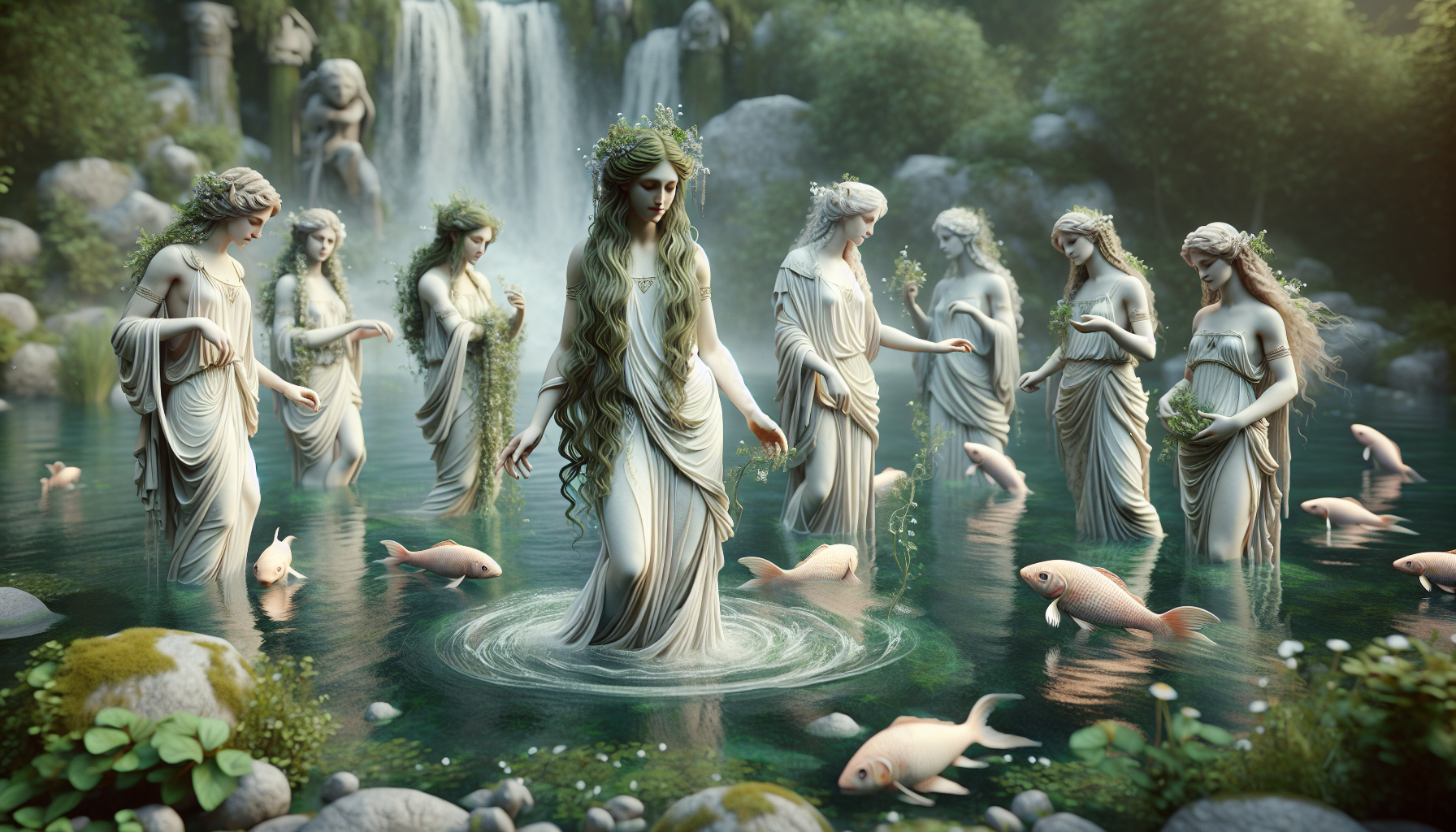 Naiads by Tai
Naiads by TaiIn Greek mythology, Naiads are freshwater nymphs associated with specific bodies of water, such as springs and rivers. Known for their enchanting beauty, they inhabit these freshwater environments and are often portrayed as nurturing and protective figures. Myths involving Naiads showcase their intricate relationships with gods and mortals, exploring themes of love, loss, and the unpredictable nature of water.
In Greek mythology, Naiads are freshwater nymphs associated with specific bodies of water, such as springs and rivers. Naiads, known for their beauty, are often depicted as enchanting young men, luring them into their watery realms. They inhabit these freshwater environments and are often portrayed as nurturing and protective figures. Myths involving Naiads showcase their intricate relationships with gods and mortals, exploring themes of love, loss, and the unpredictable nature of water.
Roman Water Gods
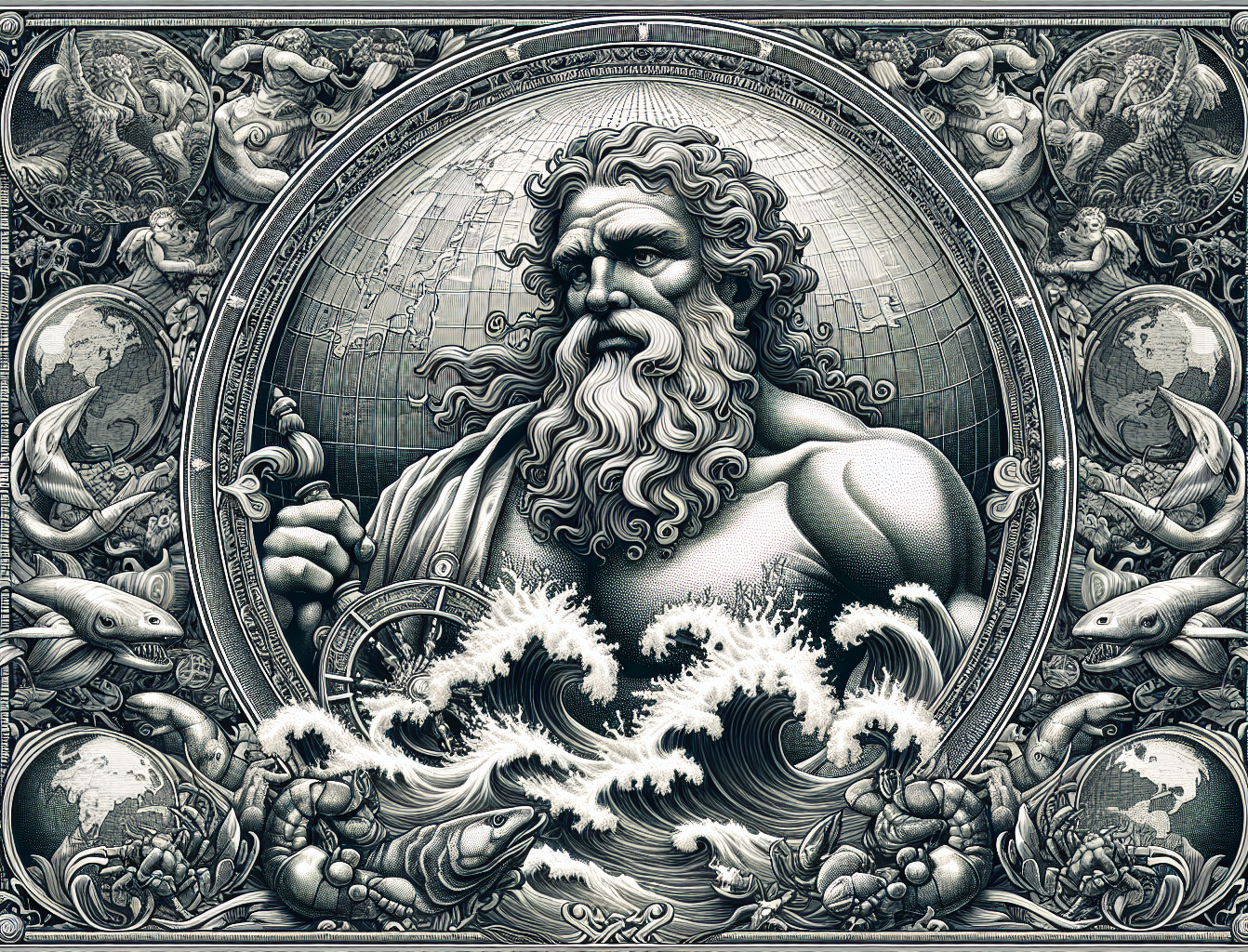 Oceanus by Tai
Oceanus by TaiRoman mythology includes powerful water gods like Oceanus and Triton- both marine spirits. In some myths, Oceanus is depicted with his wife, Tethys, symbolizing the union of sea and earth.
Oceanus, symbolizing the ocean as a primordial force, embodies both its nurturing and destructive aspects.
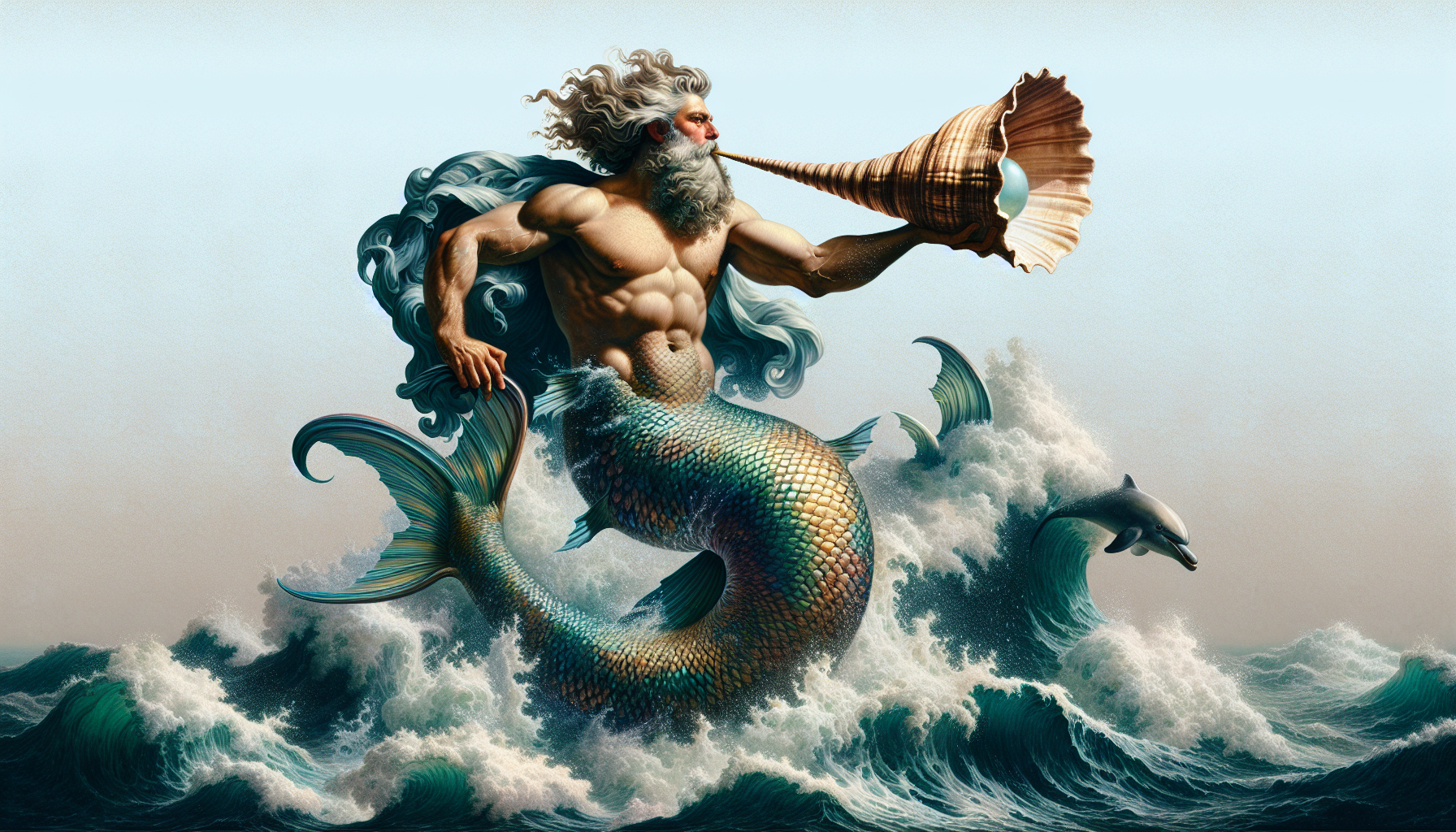 marine spirits -titron by Tai
marine spirits -titron by TaiTriton, depicted as a merman with a trident, represents the dynamic nature of the sea, illustrating its potential for both beauty and chaos.
Dangerous Slavic Water Spirits
 Vodnik by Tai
Vodnik by TaiAccording to Google, “In Slavic folklore, the primary water spirit is known as the ‘Vodnik’ (or ‘Vodyanoy’ in Russian). This spirit is typically depicted as an older male figure who dwells in water and can pose a danger to humans. Folklore states that Vodník is an evil spirit who enjoys drowning humans.
“In contrast, the female water spirit is called ‘Rusalka.’ She is often associated with the image of a mermaid. Rusalka is also a significant figure in Russian folklore.”
Legendary Water Creatures
Legendary water creatures often symbolize human hopes and fears, serving as enigmatic figures in cultural narratives. In some legends, a river child confronts and defeats powerful water spirits, illustrating the interaction between human and spirit realms. These beings, such as mermaids, can be seen as both benevolent helpers and dangerous temptresses, reflecting society’s views of women and nature.
Their myths shape societal values and influence community relationships with water.
Mermaids and Mermen
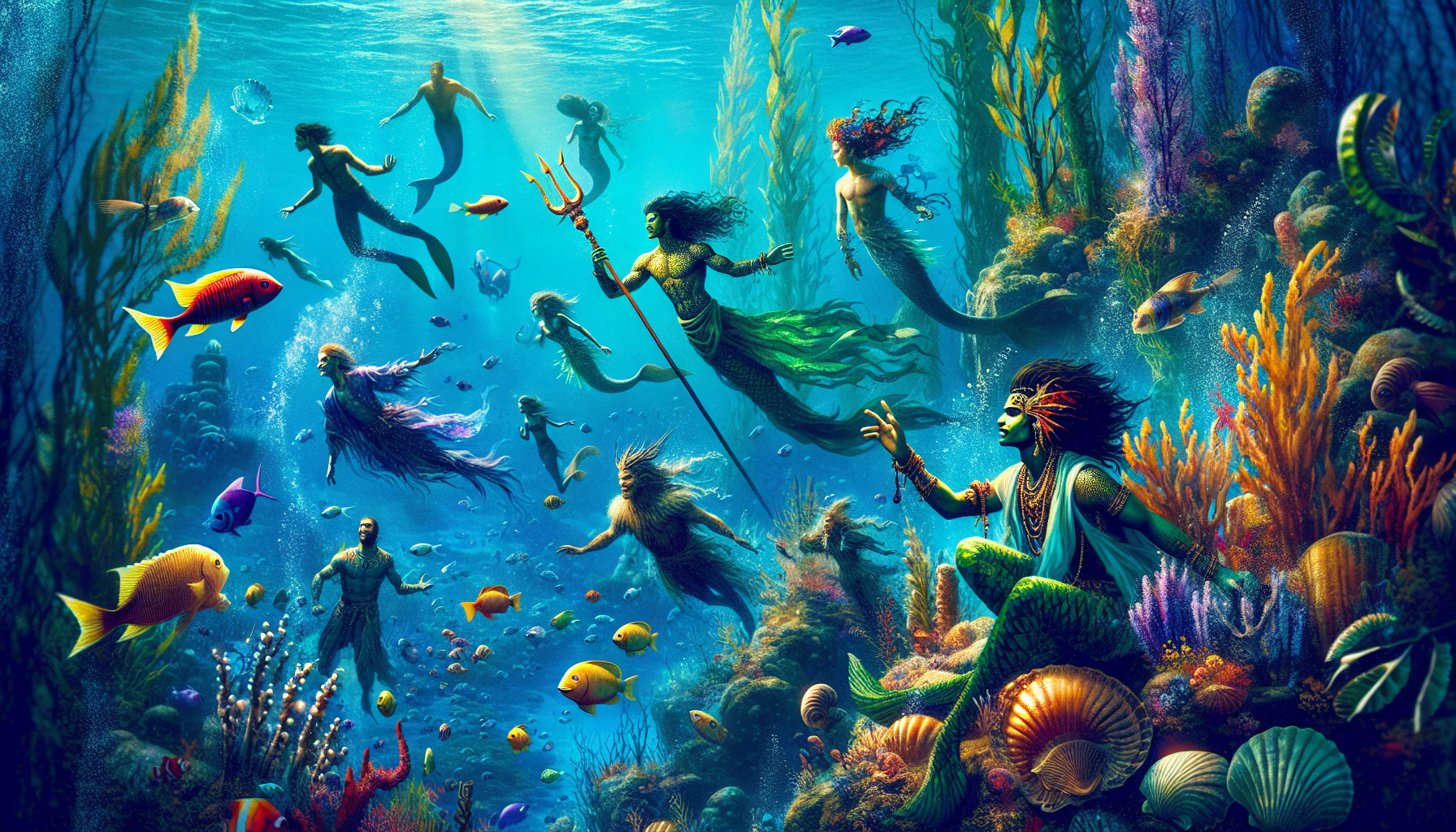 mermaids and mermen by Tai
mermaids and mermen by TaiMermaids and mermen appear in various cultural depictions, often emphasizing their dual nature. While some cultures depict them as benevolent figures linked with fertility and healing, others highlight their treacherous traits, luring sailors to their doom.
Mami Wata, for instance, is often depicted as a mermaid, embodying themes of beauty and danger.
Nixies and Undines
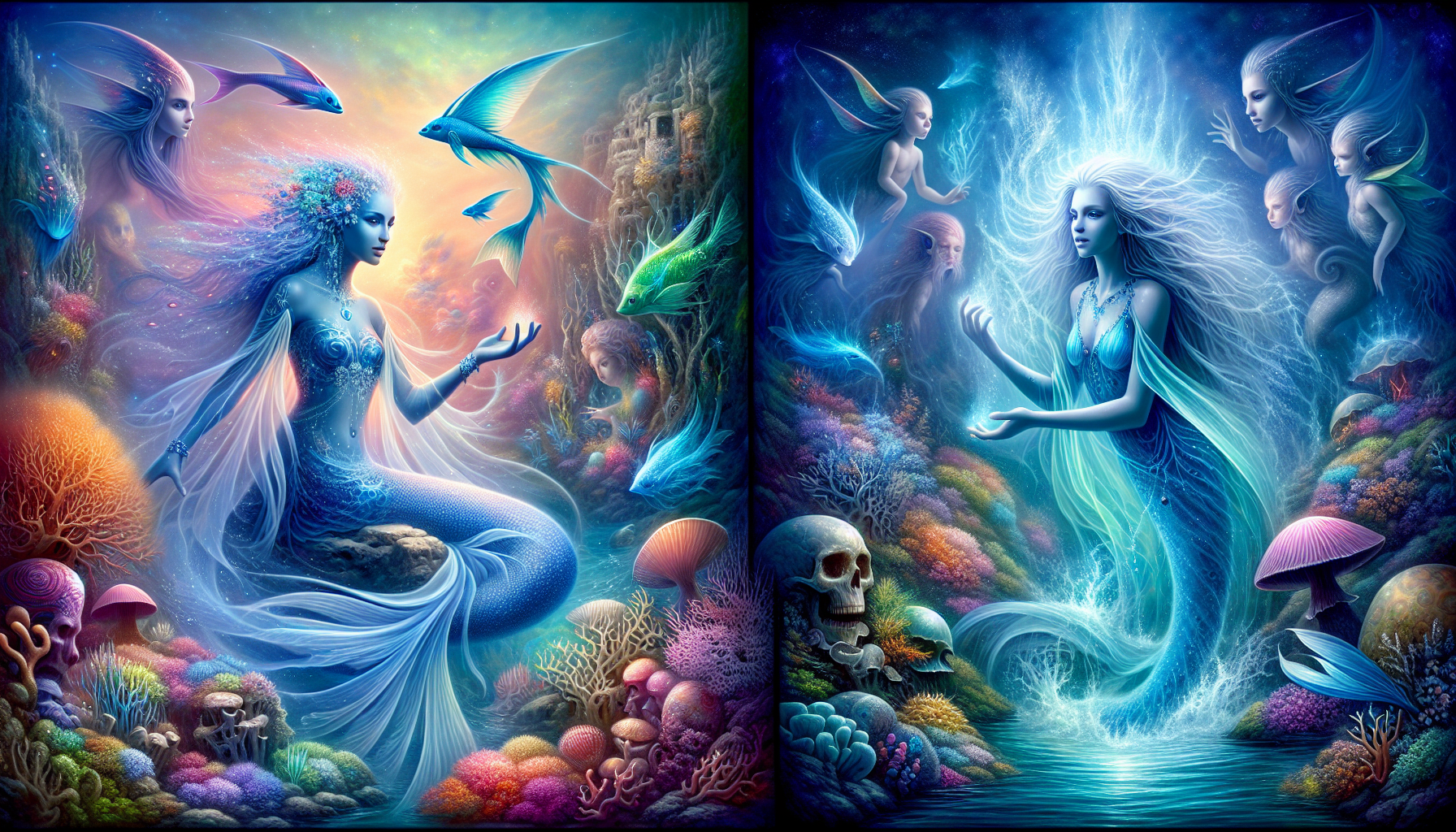 Nixies and Undines by Tai
Nixies and Undines by TaiNixies and Undines, from Germanic folklore, are shapeshifting water spirits known for their enchanting yet perilous nature. Nixies often lure humans to their watery realms, illustrating themes of seduction and danger.
These spirits highlight the complex relationship between humans and water.
Moon and Spirits of the Water
In various cultures and spiritual traditions, the full moon is associated with water spirits. It is believed to be a time when these spirits are accessible and receptive to human interaction. Many rituals are performed on these days.
During this time, it is believed that the energies of water spirits arise, offering and bringing heightened spiritual awareness.
Rituals and Ceremonies
Water spirits play vital roles in various cultural rituals and ceremonies, often linked to fertility, health, and protection. These practices underscore the importance of water spirits in maintaining balance and harmony within communities.
Healing Rituals
In many traditions, water spirits are central to healing rituals, believed to have powers that can cleanse and restore energy. These ceremonies often involve offerings and prayers at springs or streams, symbolizing blessings and healing energies for both water and land.
Fertility Rites
Fertility rites often involve offerings to water spirits, believed to enhance fertility and ensure the health of crops and childbirth. These rituals, performed at sacred water bodies, highlight the nurturing aspects of water spirits.
Ceremonies
Protection ceremonies invoking water spirits aim to safeguard communities and natural resources. These rituals, involving offerings and community participation, help ensure clean water sources and ecological balance.
In Brazil, a spiritual tradition occurs on New Year's Eve at Copacabana Beach. Worshippers gather to honor Yemayá, the holy spirit goddess of the water, by throwing white roses and boats of various sizes filled with flowers and gifts into the ocean. This ritual is performed each year in hopes of a prosperous year ahead. The event attracts hundreds of thousands of participants.
She is seen as a protector, mother, and best friend to her devotees
Environmental Significance
Guardians
Many cultures view water spirits as protectors of essential water bodies, reinforcing ecological stability and promoting respect for these resources. Their reverence in folklore encourages the conservation of water and its sanctity.
Conservation Efforts
The respect for water spirits often motivates community-led initiatives to protect aquatic environments and encourage sustainability. These actions highlight the cultural importance of water spirits in promoting collective responsibility for environmental conservation.
Summary
Water spirits, with their rich cultural and mythological backgrounds, continue to play significant roles in modern society. They inspire artistic expression, influence rituals and ceremonies, and promote environmental conservation. By understanding these mystical entities, we appreciate the deep connections between humanity and the natural world. Their enduring presence in folklore and modern culture underscores the timeless relationship between water and life. Let us carry forward the respect and reverence for these spirits, ensuring that we protect and cherish our water bodies for future generations.
Click below and views more than 600 pieces of spiritual artwork

Spiritual Books
If you enjoy the articles on this website, you will also appreciate the short stories in the books below. Click here and continue the journey.
